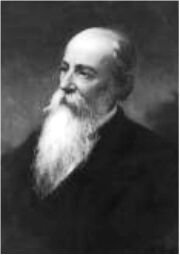
Samuel S. Haldeman
August 12, 1812 - September 10, 1880Samuel S. Haldeman was born in Locust Grove at the Haldeman Mansion just south of Bainbridge, Pennsylvania. A love of learning was instilled in him by his father, and he attended a classical school in Harrisburg, where he was trained in Latin, Greek, and classical literature. He spent two years at Dickenson College in Carlisle, PA before leaving saying, “I cannot learn from others, I must see for myself.”
Haldeman had an interest in geology, zoology, entomology, linguistics and other fields of study. In 1836, Haldeman began as a geologist when Henry Rogers, his professor from Dickenson, became the state geologist in New Jersey, and made Haldeman his assistant. A year later, Haldeman was transferred to Pennsylvania, where he actively engaged in surveying until 1842. Through his work, he made the notable discovery of a new genus species of fossil plant.
His interest in linguistics, entomology, and sensitive ear led to the discovery that certain moths and butterflies have an organ for sound. He also wrote about freshwater mollusks and their distribution across North America. He was later acknowledged by Charles Darwin in the preface of his controversial book, Origin of Species.
Haldeman held several university positions including the President of the Masonic College in Alabama, a professor of natural sciences at the University of Pennsylvania, and later the same position at Delaware College. He later went back to the University of Pennsylvania to teach philology, eventually becoming the first chair of Comparative Philology.
Haldeman founded the Philological Society, and was an early member of the National Academy of Sciences. For more information about his life and publications, see the Explore History webpage (http://explorepahistory.com/hmarker.php?marke%20%20and%20) and The Haldeman Mansion (https://www.haldeman-mansion.org).
